As parents, we all want our children to feel safe and comfortable while they sleep.
But, at some point, we must consider when it’s appropriate for our little ones to start sleeping in their own room.
It’s an important decision that shouldn’t be rushed or taken lightly.
We’ll explore the factors determining when should a child sleep in their own room, the benefits of independent sleep, tips for making the transition, and more.
Some Points Worth Considering:
- Knowing when a child should sleep in their own room is an important decision for parents.
- Independent sleep has many benefits for children’s development and well-being.
- Parents can help their child make the transition to solo sleep by creating a structured sleep routine and a supportive sleep environment.
Benefits of Sleeping in Their Own Room
As parents, we want to ensure that our children feel safe and secure, especially regarding sleep.
While co-sleeping may be a comforting arrangement in the early stages, it is important to encourage independence and establish healthy sleep habits for your child as they grow older.
Here are some of the benefits of a child sleeping in their own room:
- Encourages independence: Sleeping in their own room helps children develop a sense of independence and self-reliance, which is crucial for their overall development.
- Promotes better sleep: Children tend to sleep better in their own space, free from disruptions or distractions.
- Establishes a consistent routine: Having a designated sleep space for your child helps establish a consistent sleep routine, enabling them to get better quality sleep.
- Cultivates healthy sleep habits: Sleeping in their own room can help children develop healthy sleep habits that they can carry into adulthood.
Creating a sleep-friendly environment that promotes healthy sleep habits and encourages your child to enjoy their own space is important.
In the next section, we will discuss the signs that your child is ready for their own room.
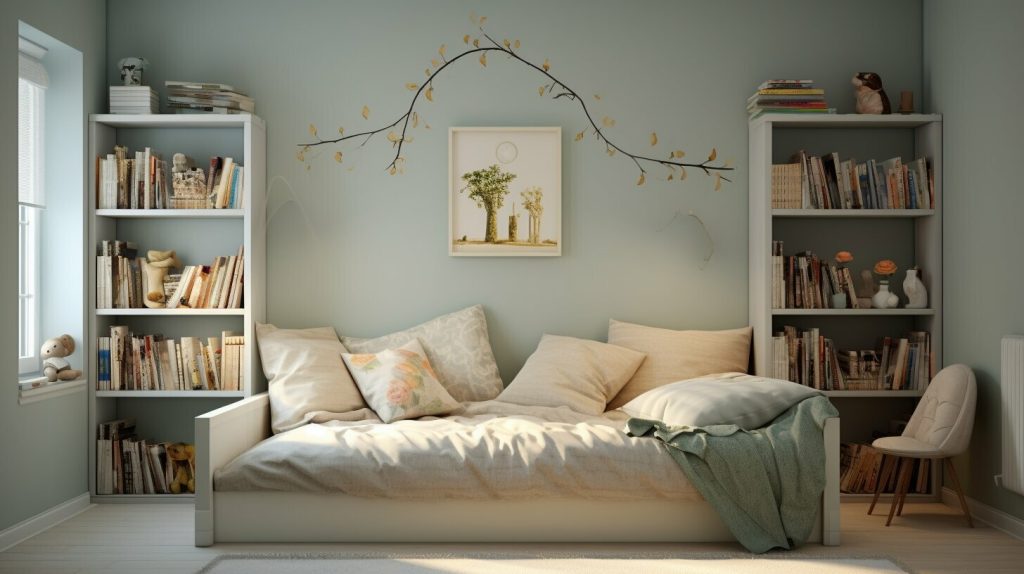
Signs That Your Child is Ready for Their Own Room
As parents, knowing when our child is ready to sleep in their own room can be challenging. However, some signs can help us determine if our child is ready for the transition.
Age is the first sign that your child is ready to sleep in their own room. Most experts recommend waiting until your child is at least six months old before moving them to their own room.
By this age, your baby has likely developed a regular sleep pattern and is more likely to sleep through the night.
Another sign that your child may be ready for their own room is if they seem interested in exploring their surroundings.
If your child is crawling or walking, they may show interest in their own space. You may notice that they are curious about their room or are interested in playing in it during the day.
Your child’s sleep patterns can also indicate that they are ready for their own room.
If your child sleeps for longer periods at night and does not wake up as frequently, this may indicate that they are ready for the transition.
Ultimately, every child is different and may be ready for their own room at different ages. It’s important to pay attention to your child’s cues and make the transition when you feel they are ready.
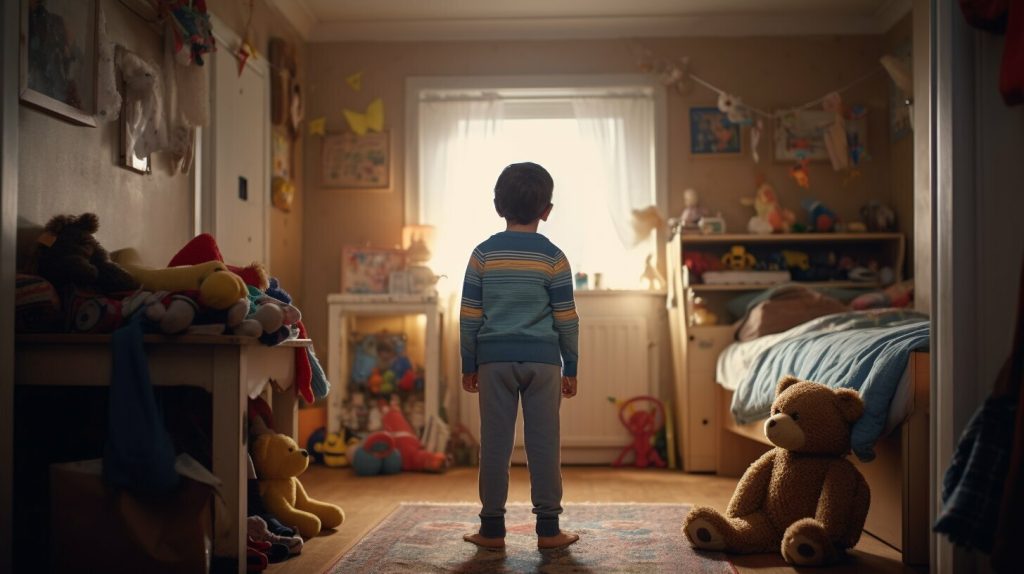
Transitioning to Their Own Room: Tips for Success
Transitioning a child to their own room can be challenging for parents. However, with some practical tips, it can be a smooth and successful journey for both the child and the parents.
Create a positive sleep environment: Ensure that the child’s room is conducive to sleep by minimizing distractions such as noise and light.
Use curtains or blinds to keep the room dark and a white noise machine to block out any background noise.
Additionally, ensure that the child’s bed and bedding are comfortable and appropriate for their age.
Establish a bedtime routine: A structured bedtime routine can help a child feel calm and secure when transitioning to their own room.
This can include activities such as taking a bath, reading a story, or singing a lullaby. Be consistent with the routine to help the child associate these activities with sleep.
Implement sleep training techniques: Gradual and gentle sleep training techniques can help a child learn to self-soothe and fall asleep independently in their own room.
These can include methods such as the “Fading” approach, where parents gradually move themselves further away from the child’s bed each night.
Another method is the “Graduated Extinction” approach, where the child is left to self-soothe for increasingly longer periods of time.
Stay patient and supportive: Remember that transitioning a child to their own room is a significant change, and it may take time for the child to adjust.
Be patient and supportive, and offer reassurance and comfort when needed. Celebrate even small successes along the way, such as the child falling asleep on their own.
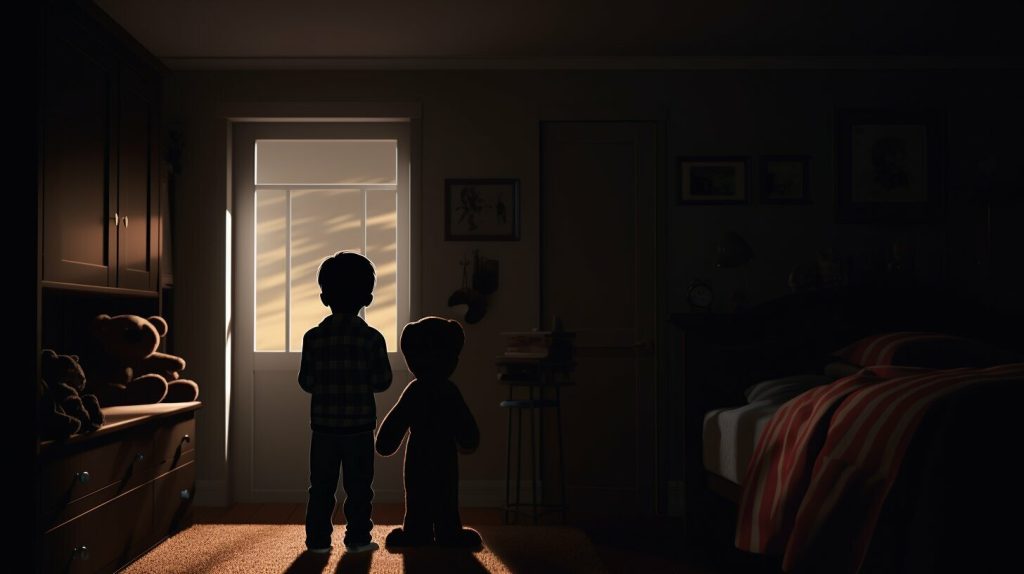
By creating a positive sleep environment, establishing a bedtime routine, implementing sleep training techniques, and offering patience and support, parents can successfully transition their child to their own room and promote healthy sleep habits for their child’s well-being.
The Optimal Age for Solo Sleeping
One of the most common questions parents ask is when their child should start sleeping in their own room.
While there is no hard and fast rule, some guidelines can help determine the optimal age for solo sleeping.
According to the American Academy of Pediatrics, infants should sleep in the same room as their parents for at least the first six months and ideally up to a year.
After that, it is generally safe for babies to transition to their own room, although some parents may prefer to wait until their child is older.
Experts suggest that between the ages of 2 and 3 is a good time to start introducing the idea of solo sleeping.
Children develop a greater sense of independence and may be more willing to explore their own space at this age.
It’s important to remember that every child is unique, and there is no one-size-fits-all approach to determining the optimal age for solo sleeping.
Parents should also consider their child’s temperament, sleep patterns, and overall readiness to sleep independently.
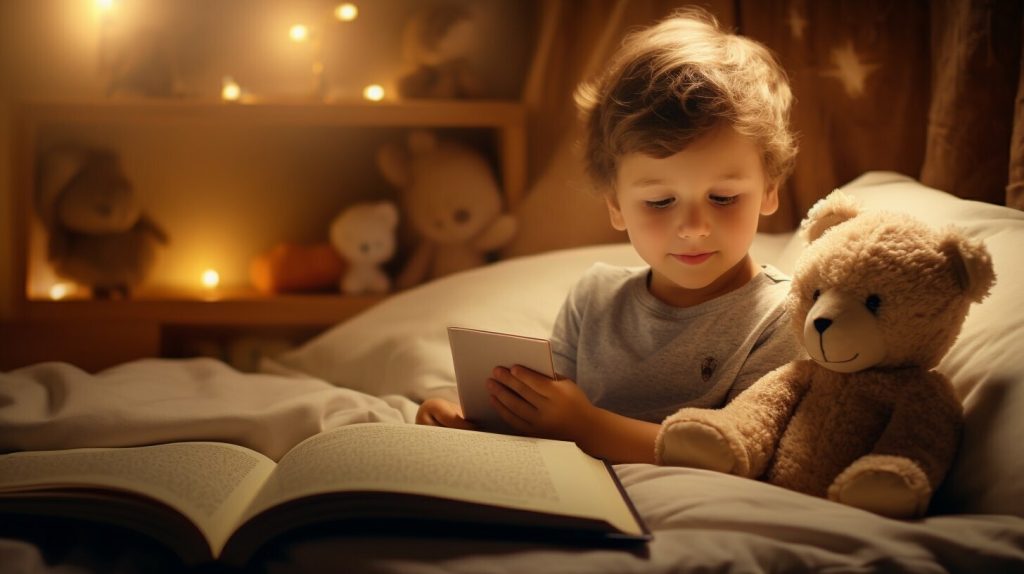
Establishing a Sleep Routine for Your Child in Their Own Room
Establishing a consistent sleep routine is one of the most important factors in getting your child to sleep in their own room.
This means creating a calming, predictable environment that promotes relaxation and healthy sleep habits.
Firstly, it’s important to establish a consistent bedtime. This will help your child’s body clock regulate and ensure that they get enough sleep each night.
You can also introduce a wind-down period before bedtime, where you engage in relaxing activities such as reading a story or listening to calming music.
Creating a sleep-friendly environment is also key. Ensure the room is quiet, dark and at a comfortable temperature and that your child has a comfortable mattress and bedding.
You may also want to use a nightlight or a white noise machine to help your child feel secure and relaxed.
You can introduce positive sleep associations as your child becomes more comfortable in their room.
This means creating a link between certain activities or objects, such as a favourite toy or a special blanket, and sleeping in their own room.
This can help your child feel more secure and confident in their new sleeping environment.
Remember, every child is different and may require different strategies to establish a successful sleep routine.
Be patient and flexible, and don’t be afraid to experiment with different techniques until you find what works best for your child.
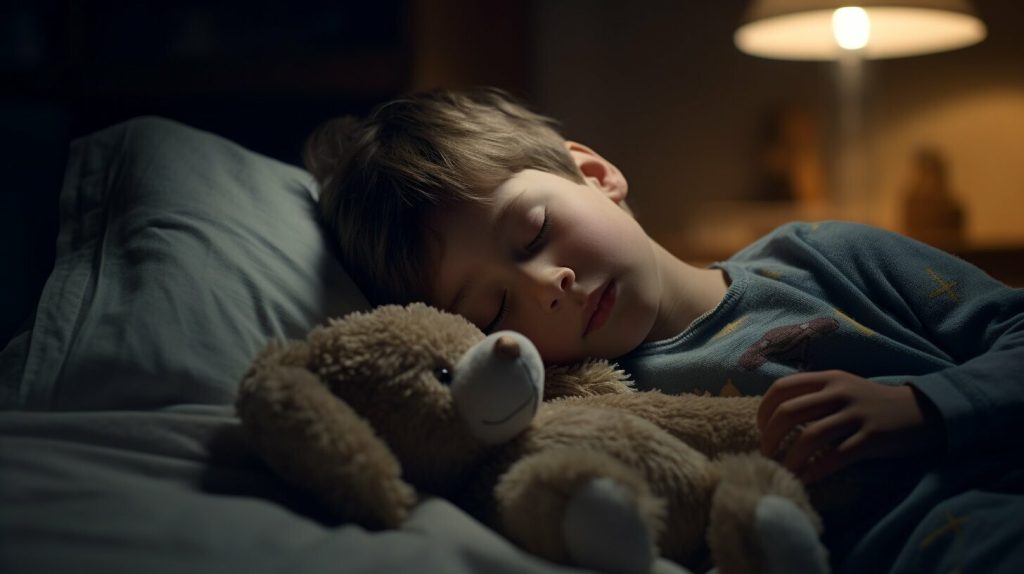
“Creating a calming and predictable environment that promotes relaxation and healthy sleep habits is key in establishing a successful sleep routine for your child.”
Transitioning from Co-Sleeping to Independent Sleeping
Transitioning a child from co-sleeping to independent sleeping in their own room can be challenging for parents and children.
However, promoting sleep independence and creating healthy sleep habits is important.
Here are some tips for making this transition as smooth as possible:
- Start gradually: Start by moving your child to their own bed in your room, then gradually move them to their room once they feel comfortable.
- Create a cosy environment: Make your child’s room feel as cosy and inviting as possible. Use soft bedding, ambient lighting, and calming colours.
- Stick to a routine: Establish a consistent bedtime routine to help your child feel secure and relaxed. This could include reading a story, singing a lullaby, or giving a goodnight hug.
- Be patient: It may take time for your child to adjust to sleeping alone. Be patient and offer reassurance when needed.
Remember that every child is different, and there is no one-size-fits-all approach to transitioning from co-sleeping to independent sleeping.
If unsure about the process, consult your paediatrician or a sleep expert for guidance.

Importance of Independent Sleep for Children
Encouraging independent sleep is crucial for a child’s development, self-esteem and overall health.
When a child sleeps in their own room, they learn to be self-sufficient and confident in their abilities. It also promotes a healthy sleep routine and helps to establish boundaries.
Independence: Independent sleep promotes self-sufficiency, allowing children to feel competent and confident in managing their own needs. It also helps them learn to be responsible for their own actions.
Sleep Routine: A structured sleep routine helps children learn to self-soothe and settle into sleep independently. It also helps to establish boundaries and expectations around sleep.
Boundary Setting: Sleeping in their own room helps children develop a sense of ownership over their own space, strengthening their sense of self. It also teaches them to respect boundaries and fosters positive relationships with others.
Parents are setting their children up for emotional and behavioural success later in life by promoting independent sleep.
It may take time and patience to transition your child to sleeping in their own room, but the benefits are well worth the effort.

Conclusion
As we have discussed, understanding when a child should sleep in their own room is an important decision for parents.
There are many benefits to promoting independent sleep for children, including improved sleep quality and overall development.
When preparing for the transition to their own room, it is essential to create a sleep-friendly environment, establish a consistent bedtime routine, and implement effective sleep training techniques.
Recognising signs that your child is ready for solo sleeping, and understanding the optimal age for such a transition, can make the process much smoother.
Transitioning from co-sleeping to independent sleeping can be challenging, but it can be achieved successfully with patience and consistency.
By prioritising independent sleep for your child, you are helping to foster their self-esteem and sense of security and promote healthy sleep habits for life.
FAQs
Q: When should a child sleep in their own room?
A: The optimal age for a child to start sleeping in their own room can vary, but generally, it is recommended to transition them between 6 months and 2 years. However, every child is different, so it’s important to consider their readiness and unique needs.
Q: What are the benefits of a child sleeping in their own room?
A: Sleeping in their own room promotes independence, creates a sleep-friendly environment, and establishes a consistent sleep routine. It allows the child to have their own space and develop self-soothing skills.
Q: How can I tell if my child is ready for their own room?
A: Several signs indicate a child may be ready for their own room. These include their age, sleep patterns, and willingness to explore and spend time in their space.
Q: What tips can help transition my child to their own room successfully?
A: To ensure a successful transition, create a positive sleep environment, establish a bedtime routine, and implement effective sleep training techniques. Gradually introduce your child to their own bedroom and provide comfort and reassurance during this process.
Q: How do I establish a sleep routine for my child in their own room?
A: To establish a consistent sleep routine, create a structured bedtime routine that includes bath time, reading a book, or listening to calming music. Additionally, ensure the bedroom is a sleep-friendly environment with dim lighting and a comfortable bed.
Q: How can I transition my child from co-sleeping to independent sleeping?
A: Transitioning from co-sleeping to independent sleeping can be challenging. Start by gradually moving your child to their own room, providing comfort and reassurance throughout the process. Implement consistent sleep training techniques and establish a bedtime routine to help them adjust to sleeping independently.
Q: Why is independent sleep important for children?
A: Independent sleep is important for children as it promotes their overall development, self-esteem, and sleep quality. It allows them to develop essential self-soothing skills and creates a sense of independence and autonomy.

